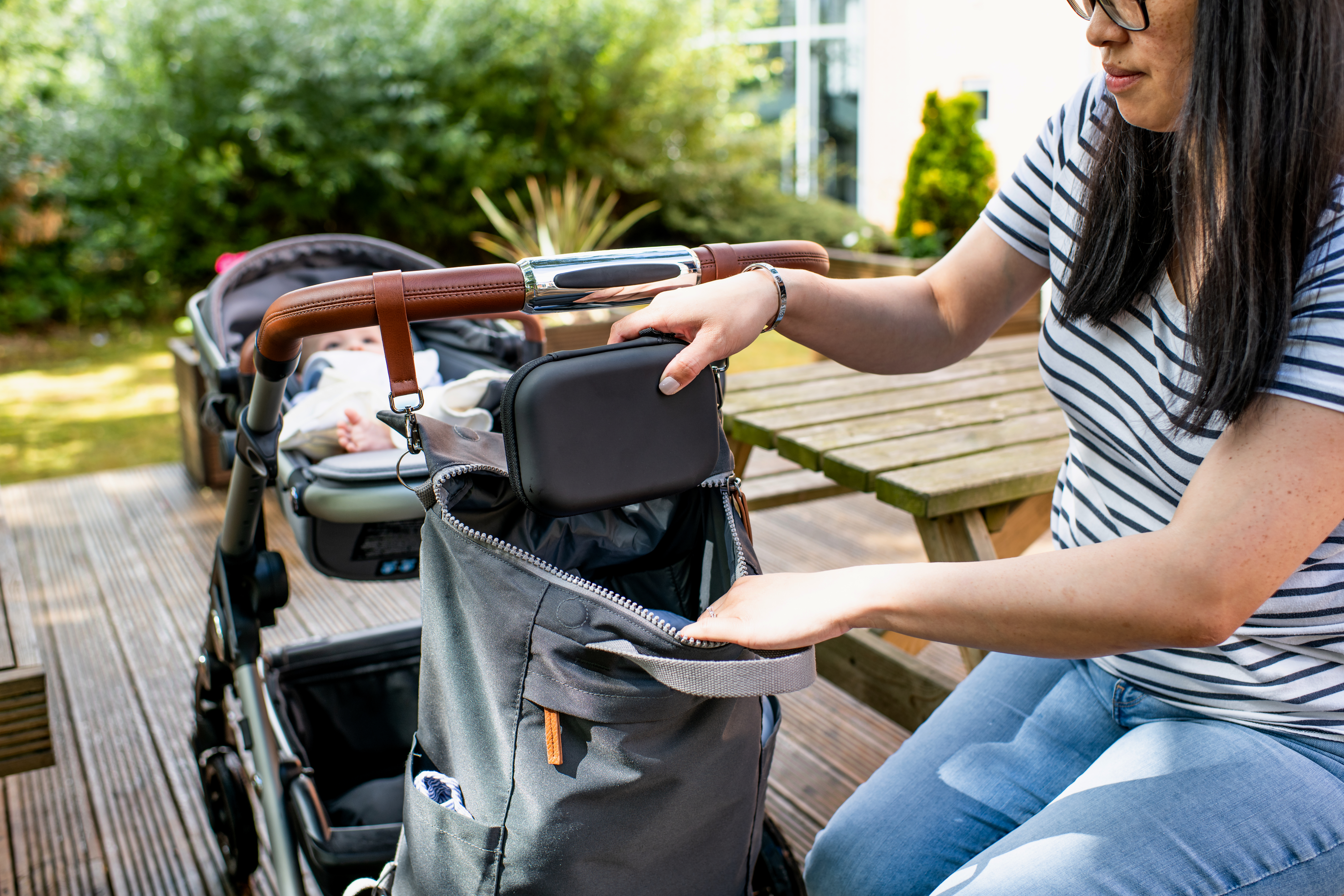Postpartum breast engorgement is common in people who have had a baby and are breastfeeding. It’s one of the many physical changes your body goes through after giving birth.
We’ve written this guide to explain why breast engorgement happens and to help you learn how to relieve the uncomfortable symptoms that come with it.
What is breast engorgement?
Breast engorgement happens when the breast becomes overly full of breast milk. This can lead to swelling and inflammation caused by increased milk supply and blood flow.
It can be very uncomfortable, and if your boobs are engorged, they may feel painful, hard, and tight, and breast milk may leak from your nipples. Other symptoms of breast engorgement include:
- Breasts that are warm to the touch.
- Nipples that are painful, flat or hard.
- A mild fever below 38°C that usually settles in 24 hours.
Why does breast engorgement happen?
Breast engorgement is usually triggered when the pregnancy hormones oestrogen and progesterone drop from the moment your placenta is delivered after the birth of your baby. From that moment, prolactin (the hormone that tells your boobs to make breast milk) begins to kick in.
Within three or four days post-birth, your breasts go through different stages of producing milk, including colostrum to making transitional, and then mature milk. At the same time, blood flows to your breasts to help keep things moving. This fast-paced process is sometimes referred to as your breast milk coming in, and results in feelings of intense fullness, swelling, or pressure in the boobs, otherwise known as breast engorgement.
There are several other reasons why breasts can become engorged, including if:
- Baby isn’t feeding enough or latching correctly to draw enough milk.
- You’ve got an oversupply of breast milk – some parents produce more milk than their baby needs.
- The gaps between feeds get longer because your baby slept for longer throughout the night without feeding.
- You’re weaning your baby off breastfeeding.
- You suddenly start nursing or pumping less frequently because you’re going back to work.
- There’s a change in your breastfeeding routine.
- Your baby has less of an appetite for breast milk because they’re feeling unwell or have started to eat more solid foods.
How long does engorgement last?
Although breast engorgement can be uncomfortable and it can take a few days for your milk supply to match your baby’s needs, it’s important to note that the symptoms should gradually ease as you breastfeed or express milk from your breast.
While there’s no set time when breast engorgement will subside, the worst of engorgement usually comes soon after birth, and if you’re breastfeeding, it should ease within two to three days. But it’s important to note that it can reoccur for as long as you’re breastfeeding or pumping.
If you’re not breastfeeding your baby or using a breast pump to express, the symptoms of breast engorgement should pass within a few days.
Breast engorgement treatment
Luckily engorgement is temporary and there are lots of things you can do to relieve it. The following tips may help ease your discomfort.
How to relieve breast engorgement when breastfeeding
- Feed your baby little and often.
- Express between feeds by hand or using a pump to relieve the discomfort, but not too much as this can encourage your body to produce more breastmilk.
- Offer both breasts to your baby equally to ensure one side doesn’t become more engorged than the other.
- Use a warm compress before feeds to soften the areola, encourage let down and relieve tightness.
- Choose a comfortable, well-fitting bra.
- Pop a cool, clean cabbage leaf onto your boob after feeding or expressing. This is a popular home remedy that may help with the swelling, but it’s not guaranteed to work for everyone.
- Try different breastfeeding positions and check that your baby is latching on correctly when feeding.
- Take the recommended dose of pain relief medication like paracetamol or ibuprofen.
What if I have breast engorgement but I’m not breastfeeding?
For a couple of days after birth, your breasts will start to make milk even if you’re not breastfeeding. Engorgement can happen in this early stage and typically will get better within several days. Eventually, your body will stop making breast milk if you’re not pumping or feeding, although this can take several weeks.
In the meantime, you can try these tips to help relieve your discomfort:
- Apply ice packs to your boobs to help soothe discomfort.
- Wear a comfortable bra that provides good support.
- Try to avoid nipple stimulation or pumping a lot of milk. Instead, try to hand express a small amount to provide some relief, but not enough to trigger the production of more breast milk.
- Take the recommended dose of pain relief medication like paracetamol or ibuprofen.
What to do if breast engorgement is making it hard for your newborn to latch
Sometimes, you may find that your breasts become overly full very fast. While this sounds like a good thing when you have a hungry baby, it can make it difficult for them to latch. To help you can try:
- Regular pumping by hand or using a pump. This can relieve some engorgement and help your baby latch comfortably.
- Gently massaging your breast in circular motions to help get your breast milk flowing while baby feeds.
- Reverse Pressure Softening – a massage technique that softens the nipple and therefore helps baby latch.
Can I prevent breast engorgement?
As we’ve covered, breast engorgement is common (especially in the first few days after giving birth to your baby). But there are ways to reduce the chances of it happening later in your breastfeeding journey:
- Breastfeed or pump regularly.
- Hand express or pump to remove small amounts of breastmilk between feeds.
- Use ice packs to reduce your milk supply if you’re not breastfeeding or pumping.
- Don’t suddenly stop breastfeeding – wean your baby
- Ensure baby is in a good breastfeeding position and that they’re getting the right amount of milk.
What are the risks of breast engorgement?
Overly full breasts may not sound risky, but they can lead to uncomfortable clogged ducts and a painful condition known as mastitis.
Leaking can also occur if your boobs are overly full, which may not be a health risk but can be inconvenient and cause discomfort.
In rare cases, engorgement can get so bad that breast milk isn’t able to flow at all, as the breast changes shape and the milk ducts become so narrow that nothing can get through.
If you’ve followed the tips above but are still struggling to relieve the symptoms of breast engorgement yourself, don’t hesitate to ask your midwife, health visitor or Lactation Consultant for advice and support.
What to do about breast engorgement when stopping breastfeeding
Engorgement can happen whenever you decide to stop breastfeeding, so it’s best to slowly wean your baby off breastfeeding to avoid an oversupply of breast milk.
You can also express a little between feeds, space out feeds, use ice packs regularly on your breasts, and avoid hot showers.


